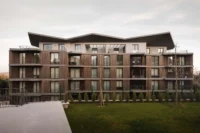When it comes to shaping the spaces where we live, work, and play, architecture demands a thoughtful approach. Balancing creativity with functionality isn’t easy, and that’s where tools like SWOT analysis come in. By evaluating strengths, weaknesses, opportunities, and threats, we can make informed decisions that drive better designs and smarter project management.
In architecture, every project brings unique challenges and possibilities. A SWOT analysis helps us uncover hidden potential while addressing risks head-on. Whether we’re designing a skyscraper or a cozy home, this strategic tool ensures we stay aligned with goals and adapt to changing circumstances. It’s not just about solving problems—it’s about creating lasting value.
What Is SWOT Analysis In Architecture?

SWOT analysis in architecture evaluates a project’s Strengths, Weaknesses, Opportunities, and Threats. It helps architects identify critical internal and external factors that influence design decisions. Strengths include unique design elements or site advantages, while weaknesses highlight limitations like budget constraints or zoning restrictions. Opportunities focus on growth potential, such as sustainable building trends, and threats address external risks like economic downturns or material shortages.
This analysis promotes informed decision-making by aligning design strategies with a project’s goals and context. By assessing these four dimensions, we can optimize resource allocation, enhance project outcomes, and reduce unforeseen challenges during implementation. For example, understanding community needs can uncover opportunities for social impact, while identifying structural risks may prevent costly modifications later.
Importance Of SWOT Analysis In Architectural Projects

SWOT analysis holds significant value in architectural projects. It offers a framework to evaluate critical factors influencing project success, ensuring designs are both innovative and practical.
Identifying Strengths
We uncover and highlight elements that give a project a competitive edge. Strengths often include efficient use of site features, innovative design concepts, or adherence to sustainable practices. For instance, a project may benefit from a prime location or access to renewable energy sources, enhancing its feasibility and appeal.
Recognizing Weaknesses
Analyzing limitations helps pinpoint areas requiring improvement. Weaknesses may stem from constrained budgets, complex site conditions, or insufficient resources. For example, steep terrain could complicate construction, while outdated infrastructure might increase costs. Addressing these early mitigates their impact.
Seizing Opportunities
We identify external factors that foster growth or add value to designs. Opportunities might involve adopting green building certifications, leveraging community partnerships, or capitalizing on market trends favoring adaptive reuse. For example, rising demand for eco-friendly buildings presents a chance to integrate sustainable materials.
Addressing Threats
Evaluating risks protects projects from potential setbacks. Threats could include economic shifts, labor shortages, or strict regulatory requirements. For instance, fluctuating material costs might strain budgets, while changing zoning laws could hinder approvals. Proactively managing these threats minimizes disruptions and ensures smoother project execution.
Steps To Conduct SWOT Analysis In Architecture

Conducting a SWOT analysis in architecture involves a systematic approach to identify and evaluate critical factors influencing a project’s success. Each step builds a comprehensive understanding of strengths, weaknesses, opportunities, and threats.
Data Collection And Research
Gathering relevant data is crucial for an effective SWOT analysis. We collect project-specific information, including site conditions, client expectations, budget constraints, and zoning regulations. Additionally, we analyze market trends, community needs, and environmental concerns. This data helps us understand both the internal and external factors impacting the design process.
Creating The SWOT Matrix
We organize the collected information into a structured SWOT matrix. Strengths, such as innovative design concepts or excellent material quality, and weaknesses, like limited funding or logistical challenges, are listed under internal factors. Opportunities, including technological advancements or sustainable design incentives, and threats, such as rising material costs or legal hurdles, are categorized as external factors. This matrix provides clarity and focus.
Analyzing And Prioritizing Factors
Evaluating and ranking each identified factor by its impact allows us to prioritize. We assess the significance of internal factors, like unique site features or skill gaps within the team, and external elements, such as economic conditions or policy changes. This enables us to address critical issues and leverage significant opportunities effectively.
Developing Strategic Plans
Strategic plans are created to align architectural goals with the SWOT findings. We design action steps to maximize strengths, mitigate weaknesses, exploit opportunities, and counteract threats. For example, investing in energy-efficient systems can leverage sustainability trends, while contingency plans can minimize potential delays caused by supply chain disruptions. This ensures resource allocation is optimal, and project execution aligns with objectives.
Benefits Of Applying SWOT Analysis In Architecture

Applying SWOT analysis in architecture provides structured insights that lead to more informed strategies. It optimizes design processes and helps architects address complex challenges effectively.
Improved Decision-Making
SWOT analysis improves decision-making by offering a clear understanding of internal and external factors. Identifying strengths and weaknesses allows us to focus on design features that add value. For example, assessing unique site characteristics helps us maximize functionality. Simultaneously, recognizing threats such as regulatory risks ensures we preempt potential obstacles, resulting in well-rounded and practical solutions.
Enhanced Project Success Rate
Projects achieve a higher success rate when strategies align with SWOT findings. We address weaknesses early, like budget limitations or structural challenges, minimizing delays or redesigns. Opportunities, such as integrating sustainable technologies, are leveraged to add innovation. Addressing threats, whether economic downturns or fluctuating material costs, strengthens resilience. This comprehensive preparedness enhances project feasibility and execution quality.
Better Resource Allocation
Efficient resource allocation is a direct advantage of SWOT analysis. Understanding limitations ensures resources like time, budget, and materials are used effectively. Identifying opportunities allows us to channel investments into high-impact areas, such as energy-efficient designs. By avoiding overspending on low-priority tasks and anticipating risks, we ensure resources support project goals without unnecessary waste.
Challenges And Limitations Of SWOT Analysis In Architecture

SWOT analysis, while valuable, has inherent challenges in architectural applications. Subjective interpretations often affect the accuracy of assessments as team members may emphasize differing priorities. For example, one may highlight innovative design concepts as a strength, while another perceives them as impractical within budget constraints.
Static evaluations in SWOT analysis can limit adaptability in dynamic architectural contexts. Factors like evolving market trends or new zoning laws may arise after the analysis, requiring continuous reassessment. Architectural projects demand flexibility, but SWOT’s structured framework can struggle to accommodate changing variables.
Overemphasis on broad factors may dilute actionable insights in architectural decisions. Listing general threats, such as economic downturns or climate change, without project-specific analysis fails to provide targeted strategies. This lack of precision can hinder effective decision-making during critical design phases.
Resource allocation for thorough SWOT analysis can strain smaller architectural firms. Conducting comprehensive research on site conditions, materials, and client preferences requires time and expertise often unavailable to all teams. Without these inputs, the analysis risks being incomplete or skewed.
Conclusion
SWOT analysis in architecture provides a structured approach to navigate complex design challenges. By identifying project strengths, such as unique site features or innovative designs, we enhance key aspects that define success. Addressing weaknesses, including budget limitations or zoning hurdles, ensures we mitigate risks early in the process.
Opportunities, like embracing sustainable trends or fostering community engagement, align projects with future growth and societal impact. Proactively managing threats, such as regulatory shifts or resource shortages, protects project feasibility and timelines. While challenges like subjective biases and evolving factors require careful handling, continuous reassessment makes the methodology adaptable.
By integrating SWOT analysis into our architectural processes, we achieve informed, strategic decision-making that optimizes resources and elevates project outcomes. This tool ensures designs not only meet objectives but also respond effectively to external pressures and internal constraints.
- architectural design analysis
- architectural project management
- architectural SWOT methodology
- architecture project planning
- architecture project strategy
- architecture project success
- architecture strategic planning
- architecture SWOT analysis
- design project SWOT
- design strategy analysis
- design SWOT analysis
- strategic approach in architecture
- strategic architecture design
- strategic design projects
- strengths and weaknesses architecture
- successful architecture techniques
- successful design strategy
- SWOT analysis architecture
- SWOT for architects
- SWOT in architectural projects
- SWOT strategy architecture















Leave a comment